
EP PRE-ALGEBRA-STUDENTWORKS PLUS(1 YR.)
10th Edition
ISBN: 9780078947483
Author: GLENCOE
Publisher: MCGRAW-HILL HIGHER EDUCATION
expand_more
expand_more
format_list_bulleted
Concept explainers
Question
Chapter 1.5, Problem 30SR
To determine
To calculate:To simplify the expression
Expert Solution & Answer
Answer to Problem 30SR
Simplified expression is
Explanation of Solution
Given information:Expression
Calculation:
Expression is given as
On simplifying, we get
Thus, simplified expression is
Chapter 1 Solutions
EP PRE-ALGEBRA-STUDENTWORKS PLUS(1 YR.)
Ch. 1.1 - Prob. 1ACYPCh. 1.1 - Prob. 1BCYPCh. 1.1 - Prob. 2ACYPCh. 1.1 - Prob. 2BCYPCh. 1.1 - Prob. 2CCYPCh. 1.1 - Prob. 2DCYPCh. 1.1 - Prob. 3CYPCh. 1.1 - Prob. 1CYUCh. 1.1 - Prob. 2CYUCh. 1.1 - Prob. 3CYU
Ch. 1.1 - Prob. 4CYUCh. 1.1 - Prob. 5CYUCh. 1.1 - Prob. 6CYUCh. 1.1 - Prob. 7CYUCh. 1.1 - Prob. 8CYUCh. 1.1 - Prob. 9CYUCh. 1.1 - Prob. 10CYUCh. 1.1 - Prob. 11CYUCh. 1.1 - Prob. 12PPSCh. 1.1 - Prob. 13PPSCh. 1.1 - Prob. 14PPSCh. 1.1 - Prob. 15PPSCh. 1.1 - Prob. 16PPSCh. 1.1 - Prob. 17PPSCh. 1.1 - Prob. 18PPSCh. 1.1 - Prob. 19PPSCh. 1.1 - Prob. 20PPSCh. 1.1 - Prob. 21PPSCh. 1.1 - Prob. 22PPSCh. 1.1 - Prob. 23PPSCh. 1.1 - Prob. 24PPSCh. 1.1 - Prob. 25PPSCh. 1.1 - Prob. 26PPSCh. 1.1 - Prob. 27PPSCh. 1.1 - Prob. 28PPSCh. 1.1 - Prob. 29PPSCh. 1.1 - Prob. 30PPSCh. 1.1 - Prob. 31PPSCh. 1.1 - Prob. 32PPSCh. 1.1 - Prob. 33PPSCh. 1.1 - Prob. 34HPCh. 1.1 - Prob. 35HPCh. 1.1 - Prob. 36HPCh. 1.1 - Prob. 37HPCh. 1.1 - Prob. 38HPCh. 1.1 - Prob. 39STPCh. 1.1 - Prob. 40STPCh. 1.1 - Prob. 41STPCh. 1.1 - Prob. 42STPCh. 1.2 - Prob. 1ACYPCh. 1.2 - Prob. 1BCYPCh. 1.2 - Prob. 2ACYPCh. 1.2 - Prob. 2BCYPCh. 1.2 - Prob. 3ACYPCh. 1.2 - Prob. 3BCYPCh. 1.2 - Prob. 3CCYPCh. 1.2 - Prob. 4CYPCh. 1.2 - Prob. 1CYUCh. 1.2 - Prob. 2CYUCh. 1.2 - Prob. 3CYUCh. 1.2 - Prob. 4CYUCh. 1.2 - Prob. 5CYUCh. 1.2 - Prob. 6CYUCh. 1.2 - Prob. 7CYUCh. 1.2 - Prob. 8CYUCh. 1.2 - Prob. 9CYUCh. 1.2 - Prob. 10CYUCh. 1.2 - Prob. 11CYUCh. 1.2 - Prob. 12PPSCh. 1.2 - Prob. 13PPSCh. 1.2 - Prob. 14PPSCh. 1.2 - Prob. 15PPSCh. 1.2 - Prob. 16PPSCh. 1.2 - Prob. 17PPSCh. 1.2 - Prob. 18PPSCh. 1.2 - Prob. 19PPSCh. 1.2 - Prob. 20PPSCh. 1.2 - Prob. 21PPSCh. 1.2 - Prob. 22PPSCh. 1.2 - Prob. 23PPSCh. 1.2 - Prob. 24PPSCh. 1.2 - Prob. 25PPSCh. 1.2 - Prob. 26PPSCh. 1.2 - Prob. 27PPSCh. 1.2 - Prob. 28PPSCh. 1.2 - Prob. 29PPSCh. 1.2 - Prob. 30PPSCh. 1.2 - Prob. 31PPSCh. 1.2 - Prob. 32PPSCh. 1.2 - Prob. 33PPSCh. 1.2 - Prob. 34PPSCh. 1.2 - Prob. 35PPSCh. 1.2 - Prob. 36PPSCh. 1.2 - Prob. 37PPSCh. 1.2 - Prob. 38PPSCh. 1.2 - Prob. 39PPSCh. 1.2 - Prob. 40PPSCh. 1.2 - Prob. 41HPCh. 1.2 - Prob. 42HPCh. 1.2 - Prob. 43HPCh. 1.2 - Prob. 44HPCh. 1.2 - Prob. 45STPCh. 1.2 - Prob. 46STPCh. 1.2 - Prob. 47STPCh. 1.2 - Prob. 48STPCh. 1.2 - Prob. 49SRCh. 1.2 - Prob. 50SRCh. 1.2 - Prob. 51SRCh. 1.2 - Prob. 52SRCh. 1.2 - Prob. 53SRCh. 1.2 - Prob. 54SRCh. 1.2 - Prob. 55SRCh. 1.2 - Prob. 56SRCh. 1.2 - Prob. 57SRCh. 1.2 - Prob. 58SRCh. 1.2 - Prob. 59SRCh. 1.2 - Prob. 60SRCh. 1.2 - Prob. 61SCh. 1.2 - Prob. 62SCh. 1.2 - Prob. 63SCh. 1.2 - Prob. 64SCh. 1.3 - Prob. 1CYPCh. 1.3 - Prob. 2ACYPCh. 1.3 - Prob. 2BCYPCh. 1.3 - Prob. 2CCYPCh. 1.3 - Prob. 2DCYPCh. 1.3 - Prob. 3ACYPCh. 1.3 - Prob. 3BCYPCh. 1.3 - Prob. 4CYPCh. 1.3 - Prob. 1CYUCh. 1.3 - Prob. 2CYUCh. 1.3 - Prob. 3CYUCh. 1.3 - Prob. 4CYUCh. 1.3 - Prob. 5CYUCh. 1.3 - Prob. 6CYUCh. 1.3 - Prob. 7CYUCh. 1.3 - Prob. 8CYUCh. 1.3 - Prob. 9CYUCh. 1.3 - Prob. 10CYUCh. 1.3 - Prob. 11CYUCh. 1.3 - Prob. 12CYUCh. 1.3 - Prob. 13CYUCh. 1.3 - Prob. 14CYUCh. 1.3 - Prob. 15PPSCh. 1.3 - Prob. 16PPSCh. 1.3 - Prob. 17PPSCh. 1.3 - Prob. 18PPSCh. 1.3 - Prob. 19PPSCh. 1.3 - Prob. 20PPSCh. 1.3 - Prob. 21PPSCh. 1.3 - Prob. 22PPSCh. 1.3 - Prob. 23PPSCh. 1.3 - Prob. 24PPSCh. 1.3 - Prob. 25PPSCh. 1.3 - Prob. 26PPSCh. 1.3 - Prob. 27PPSCh. 1.3 - Prob. 28PPSCh. 1.3 - Prob. 29PPSCh. 1.3 - Prob. 30PPSCh. 1.3 - Prob. 31PPSCh. 1.3 - Prob. 32PPSCh. 1.3 - Prob. 33PPSCh. 1.3 - Prob. 34PPSCh. 1.3 - Prob. 35PPSCh. 1.3 - Prob. 36PPSCh. 1.3 - Prob. 37PPSCh. 1.3 - Prob. 38PPSCh. 1.3 - Prob. 39PPSCh. 1.3 - Prob. 40PPSCh. 1.3 - Prob. 41PPSCh. 1.3 - Prob. 42PPSCh. 1.3 - Prob. 43PPSCh. 1.3 - Prob. 44HPCh. 1.3 - Prob. 45HPCh. 1.3 - Prob. 46HPCh. 1.3 - Prob. 47HPCh. 1.3 - Prob. 48HPCh. 1.3 - Prob. 49STPCh. 1.3 - Prob. 50STPCh. 1.3 - Prob. 51STPCh. 1.3 - Prob. 52STPCh. 1.3 - Prob. 53SRCh. 1.3 - Prob. 54SRCh. 1.3 - Prob. 55SRCh. 1.3 - Prob. 56SRCh. 1.3 - Prob. 57SRCh. 1.3 - Prob. 58SRCh. 1.3 - Prob. 59SRCh. 1.3 - Prob. 60SRCh. 1.3 - Prob. 61SRCh. 1.3 - Prob. 62SRCh. 1.3 - Prob. 63SRCh. 1.3 - Prob. 64SCh. 1.3 - Prob. 65SCh. 1.3 - Prob. 66SCh. 1.3 - Prob. 67SCh. 1.3 - Prob. 68SCh. 1.3 - Prob. 69SCh. 1.3 - Prob. 70SCh. 1.3 - Prob. 71SCh. 1.4 - Prob. 1ACYPCh. 1.4 - Prob. 1BCYPCh. 1.4 - Prob. 1CCYPCh. 1.4 - Prob. 1DCYPCh. 1.4 - Prob. 2ACYPCh. 1.4 - Prob. 2BCYPCh. 1.4 - Prob. 3CYPCh. 1.4 - Prob. 4ACYPCh. 1.4 - Prob. 4BCYPCh. 1.4 - Prob. 1CYUCh. 1.4 - Prob. 2CYUCh. 1.4 - Prob. 3CYUCh. 1.4 - Prob. 4CYUCh. 1.4 - Prob. 5CYUCh. 1.4 - Prob. 6CYUCh. 1.4 - Prob. 7CYUCh. 1.4 - Prob. 8CYUCh. 1.4 - Prob. 9CYUCh. 1.4 - Prob. 10CYUCh. 1.4 - Prob. 11CYUCh. 1.4 - Prob. 12PPSCh. 1.4 - Prob. 13PPSCh. 1.4 - Prob. 14PPSCh. 1.4 - Prob. 15PPSCh. 1.4 - Prob. 16PPSCh. 1.4 - Prob. 17PPSCh. 1.4 - Prob. 18PPSCh. 1.4 - Prob. 19PPSCh. 1.4 - Prob. 20PPSCh. 1.4 - Prob. 21PPSCh. 1.4 - Prob. 22PPSCh. 1.4 - Prob. 23PPSCh. 1.4 - Prob. 24PPSCh. 1.4 - Prob. 25PPSCh. 1.4 - Prob. 26PPSCh. 1.4 - Prob. 27PPSCh. 1.4 - Prob. 28PPSCh. 1.4 - Prob. 29PPSCh. 1.4 - Prob. 30PPSCh. 1.4 - Prob. 31PPSCh. 1.4 - Prob. 32PPSCh. 1.4 - Prob. 33PPSCh. 1.4 - Prob. 34PPSCh. 1.4 - Prob. 35PPSCh. 1.4 - Prob. 36HPCh. 1.4 - Prob. 37HPCh. 1.4 - Prob. 38HPCh. 1.4 - Prob. 39HPCh. 1.4 - Prob. 40HPCh. 1.4 - Prob. 41STPCh. 1.4 - Prob. 42STPCh. 1.4 - Prob. 43STPCh. 1.4 - Prob. 44STPCh. 1.4 - Prob. 45SRCh. 1.4 - Prob. 46SRCh. 1.4 - Prob. 47SRCh. 1.4 - Prob. 48SRCh. 1.4 - Prob. 49SRCh. 1.4 - Prob. 50SRCh. 1.4 - Prob. 51SRCh. 1.4 - Prob. 52SCh. 1.4 - Prob. 53SCh. 1.4 - Prob. 54SCh. 1.4 - Prob. 55SCh. 1.4 - Prob. 56SCh. 1.4 - Prob. 57SCh. 1.5 - Prob. 1CYPCh. 1.5 - Prob. 2ACYPCh. 1.5 - Prob. 2BCYPCh. 1.5 - Prob. 1CYUCh. 1.5 - Prob. 2CYUCh. 1.5 - Prob. 3CYUCh. 1.5 - Prob. 4PPSCh. 1.5 - Prob. 5PPSCh. 1.5 - Prob. 6PPSCh. 1.5 - Prob. 7PPSCh. 1.5 - Prob. 8PPSCh. 1.5 - Prob. 9PPSCh. 1.5 - Prob. 10PPSCh. 1.5 - Prob. 11PPSCh. 1.5 - Prob. 12HPCh. 1.5 - Prob. 13HPCh. 1.5 - Prob. 14HPCh. 1.5 - Prob. 15STPCh. 1.5 - Prob. 16STPCh. 1.5 - Prob. 17STPCh. 1.5 - Prob. 18STPCh. 1.5 - Prob. 19SRCh. 1.5 - Prob. 20SRCh. 1.5 - Prob. 21SRCh. 1.5 - Prob. 22SRCh. 1.5 - Prob. 23SRCh. 1.5 - Prob. 24SRCh. 1.5 - Prob. 25SRCh. 1.5 - Prob. 26SRCh. 1.5 - Prob. 27SRCh. 1.5 - Prob. 28SRCh. 1.5 - Prob. 29SRCh. 1.5 - Prob. 30SRCh. 1.5 - Prob. 31SRCh. 1.5 - Prob. 32SCh. 1.5 - Prob. 33SCh. 1.5 - Prob. 34SCh. 1.5 - Prob. 35SCh. 1.6 - Prob. 1CYPCh. 1.6 - Prob. 2CYPCh. 1.6 - Prob. 3ACYPCh. 1.6 - Prob. 3BCYPCh. 1.6 - Prob. 3CCYPCh. 1.6 - Prob. 1CYUCh. 1.6 - Prob. 2PPSCh. 1.6 - Prob. 3PPSCh. 1.6 - Prob. 4PPSCh. 1.6 - Prob. 5PPSCh. 1.6 - Prob. 6PPSCh. 1.6 - Prob. 7PPSCh. 1.6 - Prob. 8PPSCh. 1.6 - Prob. 9PPSCh. 1.6 - Prob. 10PPSCh. 1.6 - Prob. 11PPSCh. 1.6 - Prob. 12PPSCh. 1.6 - Prob. 13PPSCh. 1.6 - Prob. 14PPSCh. 1.6 - Prob. 15PPSCh. 1.6 - Prob. 16HPCh. 1.6 - Prob. 17HPCh. 1.6 - Prob. 18HPCh. 1.6 - Prob. 19HPCh. 1.6 - Prob. 20HPCh. 1.6 - Prob. 21HPCh. 1.6 - Prob. 22HPCh. 1.6 - Prob. 23STPCh. 1.6 - Prob. 24STPCh. 1.6 - Prob. 25STPCh. 1.6 - Prob. 26STPCh. 1.6 - Prob. 27SRCh. 1.6 - Prob. 28SRCh. 1.6 - Prob. 29SRCh. 1.6 - Prob. 30SRCh. 1.6 - Prob. 31SRCh. 1.6 - Prob. 32SRCh. 1.6 - Prob. 33SRCh. 1.6 - Prob. 34SCh. 1.6 - Prob. 35SCh. 1.6 - Prob. 36SCh. 1.6 - Prob. 37SCh. 1.6 - Prob. 38SCh. 1.6 - Prob. 39SCh. 1 - Prob. 1QCCh. 1 - Prob. 2QCCh. 1 - Prob. 3QCCh. 1 - Prob. 4QCCh. 1 - Prob. 5QCCh. 1 - Prob. 6QCCh. 1 - Prob. 7QCCh. 1 - Prob. 8QCCh. 1 - Prob. 9QCCh. 1 - Prob. 10QCCh. 1 - Prob. 11QCCh. 1 - Prob. 12QCCh. 1 - Prob. 13QCCh. 1 - Prob. 14QCCh. 1 - Prob. 15QCCh. 1 - Prob. 16QCCh. 1 - Prob. 17QCCh. 1 - Prob. 18QCCh. 1 - Prob. 19QCCh. 1 - Prob. 1MCQCh. 1 - Prob. 2MCQCh. 1 - Prob. 3MCQCh. 1 - Prob. 4MCQCh. 1 - Prob. 5MCQCh. 1 - Prob. 6MCQCh. 1 - Prob. 7MCQCh. 1 - Prob. 8MCQCh. 1 - Prob. 9MCQCh. 1 - Prob. 10MCQCh. 1 - Prob. 11MCQCh. 1 - Prob. 12MCQCh. 1 - Prob. 13MCQCh. 1 - Prob. 14MCQCh. 1 - Prob. 15MCQCh. 1 - Prob. 16MCQCh. 1 - Prob. 17MCQCh. 1 - Prob. 18MCQCh. 1 - Prob. 19MCQCh. 1 - Prob. 20MCQCh. 1 - Prob. 21MCQCh. 1 - Prob. 22MCQCh. 1 - Prob. 23MCQCh. 1 - Prob. 24MCQCh. 1 - Prob. 25MCQCh. 1 - Prob. 1SGRCh. 1 - Prob. 2SGRCh. 1 - Prob. 3SGRCh. 1 - Prob. 4SGRCh. 1 - Prob. 5SGRCh. 1 - Prob. 6SGRCh. 1 - Prob. 7SGRCh. 1 - Prob. 8SGRCh. 1 - Prob. 9SGRCh. 1 - Prob. 10SGRCh. 1 - Prob. 11SGRCh. 1 - Prob. 12SGRCh. 1 - Prob. 13SGRCh. 1 - Prob. 14SGRCh. 1 - Prob. 15SGRCh. 1 - Prob. 16SGRCh. 1 - Prob. 17SGRCh. 1 - Prob. 18SGRCh. 1 - Prob. 19SGRCh. 1 - Prob. 20SGRCh. 1 - Prob. 21SGRCh. 1 - Prob. 22SGRCh. 1 - Prob. 23SGRCh. 1 - Prob. 24SGRCh. 1 - Prob. 25SGRCh. 1 - Prob. 26SGRCh. 1 - Prob. 27SGRCh. 1 - Prob. 28SGRCh. 1 - Prob. 29SGRCh. 1 - Prob. 30SGRCh. 1 - Prob. 1PTCh. 1 - Prob. 2PTCh. 1 - Prob. 3PTCh. 1 - Prob. 4PTCh. 1 - Prob. 5PTCh. 1 - Prob. 6PTCh. 1 - Prob. 7PTCh. 1 - Prob. 8PTCh. 1 - Prob. 9PTCh. 1 - Prob. 10PTCh. 1 - Prob. 11PTCh. 1 - Prob. 12PTCh. 1 - Prob. 13PTCh. 1 - Prob. 14PTCh. 1 - Prob. 15PTCh. 1 - Prob. 16PTCh. 1 - Prob. 17PTCh. 1 - Prob. 18PTCh. 1 - Prob. 19PTCh. 1 - Prob. 20PTCh. 1 - Prob. 21PTCh. 1 - Prob. 22PTCh. 1 - Prob. 23PTCh. 1 - Prob. 24PTCh. 1 - Prob. 25PTCh. 1 - Prob. 1ECh. 1 - Prob. 2ECh. 1 - Prob. 3ECh. 1 - Prob. 4ECh. 1 - Prob. 1STPCh. 1 - Prob. 2STPCh. 1 - Prob. 3STPCh. 1 - Prob. 4STPCh. 1 - Prob. 5STPCh. 1 - Prob. 6STPCh. 1 - Prob. 7STPCh. 1 - Prob. 8STPCh. 1 - Prob. 9STPCh. 1 - Prob. 10STPCh. 1 - Prob. 11STP
Additional Math Textbook Solutions
Find more solutions based on key concepts
Spring constant It took 1800 J of work to stretch a spring from its natural length of 2 m to a length of 5 m. F...
University Calculus: Early Transcendentals (4th Edition)
CHECK POINT 1 Find a counterexample to show that the statement The product of two two-digit numbers is a three-...
Thinking Mathematically (6th Edition)
Fill in each blank so that the resulting statement is true. An equation that expresses a relationship between t...
Algebra and Trigonometry (6th Edition)
Find how many SDs above the mean price would be predicted to cost.
Intro Stats, Books a la Carte Edition (5th Edition)
Knowledge Booster
Learn more about
Need a deep-dive on the concept behind this application? Look no further. Learn more about this topic, algebra and related others by exploring similar questions and additional content below.Similar questions
- options are greater than less than or about the same asarrow_forwardA candy machine contains over \[1{,}000\] pieces of candy, \[30\%\] of which are blue. Customers get an SRS of \[15\] candies in a purchase. Let \[X=\] the number of blue candies that a random customer gets in a purchase. Find the mean and standard deviation of \[X\].You may round your answers to the nearest tenth.arrow_forwardA television show tests the abilities of alleged psychics by presenting contestants with a set of \[4\] cards placed upside down, \[1\] of which has a star printed on it. Each contestant attempts to identify which card has the star on it for a series of \[50\] trials. Assuming that the contestants are purely guessing, what are the mean and standard deviation of the number of trials where the contestant guesses correctly?You may round your answers to the nearest tenth.arrow_forward
- A television show tests the abilities of alleged psychics by presenting contestants with a set of \[4\] cards placed upside down, \[1\] of which has a star printed on it. Each contestant attempts to identify which card has the star on it for a series of \[50\] trials. Assuming that the contestants are purely guessing, what are the mean and standard deviation of the number of trials where the contestant guesses correctly?You may round your answers to the nearest tenth.arrow_forwardA large fast-food chain runs a promotion where \[1\]-in-\[4\] boxes of french fries include a coupon for a free box of french fries. Suppose that some location sells \[100\] of these boxes of fries per day. Let \[X=\] the number of coupons won per day. Find the mean and standard deviation of \[X\].You may round your answers to the nearest tenth.arrow_forwardA roulette wheel has \[38\] slots, of which \[18\] are red, \[18\] are black, and \[2\] are green. In each round of the game, a ball is tossed in the spinning wheel and lands in a random slot. Suppose we watch \[7\] rounds of this game, and let \[R\] represent the number of rounds where the ball lands in a red slot. Which of the following would find \[P(R=3)\]?arrow_forward
- A small college has 800students, 10% of which are left-handed. Suppose they take an SRS of 8students. Let [L=] the number of left-handed students in the sample. Which of the following would find [P(L=2)]?arrow_forward[2 01 3. (12 pts) Let A = 1 1 and b = 1 L2 1] 213 [2] (1) (2) Use the Gram-Schmidt process to find an orthonormal basis for the column space of A. Factor A into a product QR, where Q has an orthonormal set of column vectors and R is upper triangular. (3) Solve the least squares problem Ax = b.arrow_forward22.) Mr. Vedrani has a pool with a deck built around it. The equation (2x+14)(2x+19) = 650 represents the relationship of the side lengths (in feet) of the entire pool area (in square feet). a.) If 350 represents the area of the pool and deck area, what do the expressions (2x+14) and (2x+19) each represent? b.) Using graphing technology, find x, the width of the deck around the pool. If necessary, round to the nearest tenth. x=arrow_forward
- How do I get common factors?arrow_forwardProblem #1 You apply to two different graduate programs at a specific university: one in geology and one in environmental sciences. Let P(G) = 0.8, where P(G) represents the probability that you get accepted into the geology program. Let P(E) = 0.72, where P(E) represents the probability that you get accepted into the environmental sciences program. Let P(GE) = 0.65. a). Create a Venn diagram that represents this information. b). First, calculate P(GUE). Then, using complete sentence, interpret what P(GUE) represents in the context of this problem.arrow_forwardProblem #3 Let P(G|Q) = 0.03, P(G) = 0.2, and P(Q) = 0.5. a). Find P(GnQ). b). Find P(G UQ). c). Are events G and Q independent or dependent? Explain your reasoning.arrow_forward
arrow_back_ios
SEE MORE QUESTIONS
arrow_forward_ios
Recommended textbooks for you
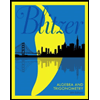 Algebra and Trigonometry (6th Edition)AlgebraISBN:9780134463216Author:Robert F. BlitzerPublisher:PEARSON
Algebra and Trigonometry (6th Edition)AlgebraISBN:9780134463216Author:Robert F. BlitzerPublisher:PEARSON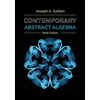 Contemporary Abstract AlgebraAlgebraISBN:9781305657960Author:Joseph GallianPublisher:Cengage Learning
Contemporary Abstract AlgebraAlgebraISBN:9781305657960Author:Joseph GallianPublisher:Cengage Learning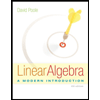 Linear Algebra: A Modern IntroductionAlgebraISBN:9781285463247Author:David PoolePublisher:Cengage Learning
Linear Algebra: A Modern IntroductionAlgebraISBN:9781285463247Author:David PoolePublisher:Cengage Learning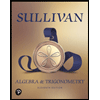 Algebra And Trigonometry (11th Edition)AlgebraISBN:9780135163078Author:Michael SullivanPublisher:PEARSON
Algebra And Trigonometry (11th Edition)AlgebraISBN:9780135163078Author:Michael SullivanPublisher:PEARSON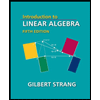 Introduction to Linear Algebra, Fifth EditionAlgebraISBN:9780980232776Author:Gilbert StrangPublisher:Wellesley-Cambridge Press
Introduction to Linear Algebra, Fifth EditionAlgebraISBN:9780980232776Author:Gilbert StrangPublisher:Wellesley-Cambridge Press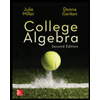 College Algebra (Collegiate Math)AlgebraISBN:9780077836344Author:Julie Miller, Donna GerkenPublisher:McGraw-Hill Education
College Algebra (Collegiate Math)AlgebraISBN:9780077836344Author:Julie Miller, Donna GerkenPublisher:McGraw-Hill Education

Algebra and Trigonometry (6th Edition)
Algebra
ISBN:9780134463216
Author:Robert F. Blitzer
Publisher:PEARSON

Contemporary Abstract Algebra
Algebra
ISBN:9781305657960
Author:Joseph Gallian
Publisher:Cengage Learning

Linear Algebra: A Modern Introduction
Algebra
ISBN:9781285463247
Author:David Poole
Publisher:Cengage Learning

Algebra And Trigonometry (11th Edition)
Algebra
ISBN:9780135163078
Author:Michael Sullivan
Publisher:PEARSON

Introduction to Linear Algebra, Fifth Edition
Algebra
ISBN:9780980232776
Author:Gilbert Strang
Publisher:Wellesley-Cambridge Press

College Algebra (Collegiate Math)
Algebra
ISBN:9780077836344
Author:Julie Miller, Donna Gerken
Publisher:McGraw-Hill Education
Inverse Functions; Author: Professor Dave Explains;https://www.youtube.com/watch?v=9fJsrnE1go0;License: Standard YouTube License, CC-BY